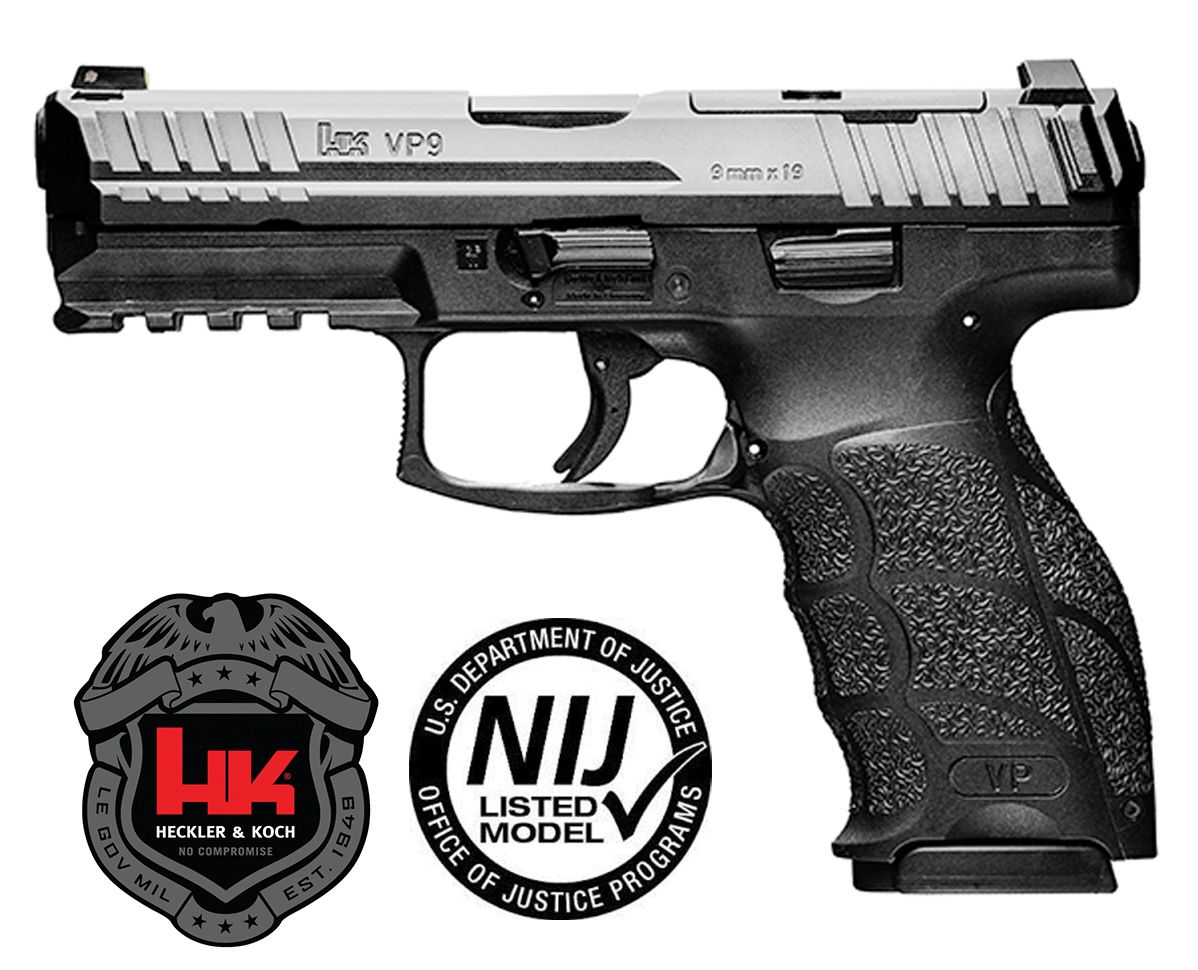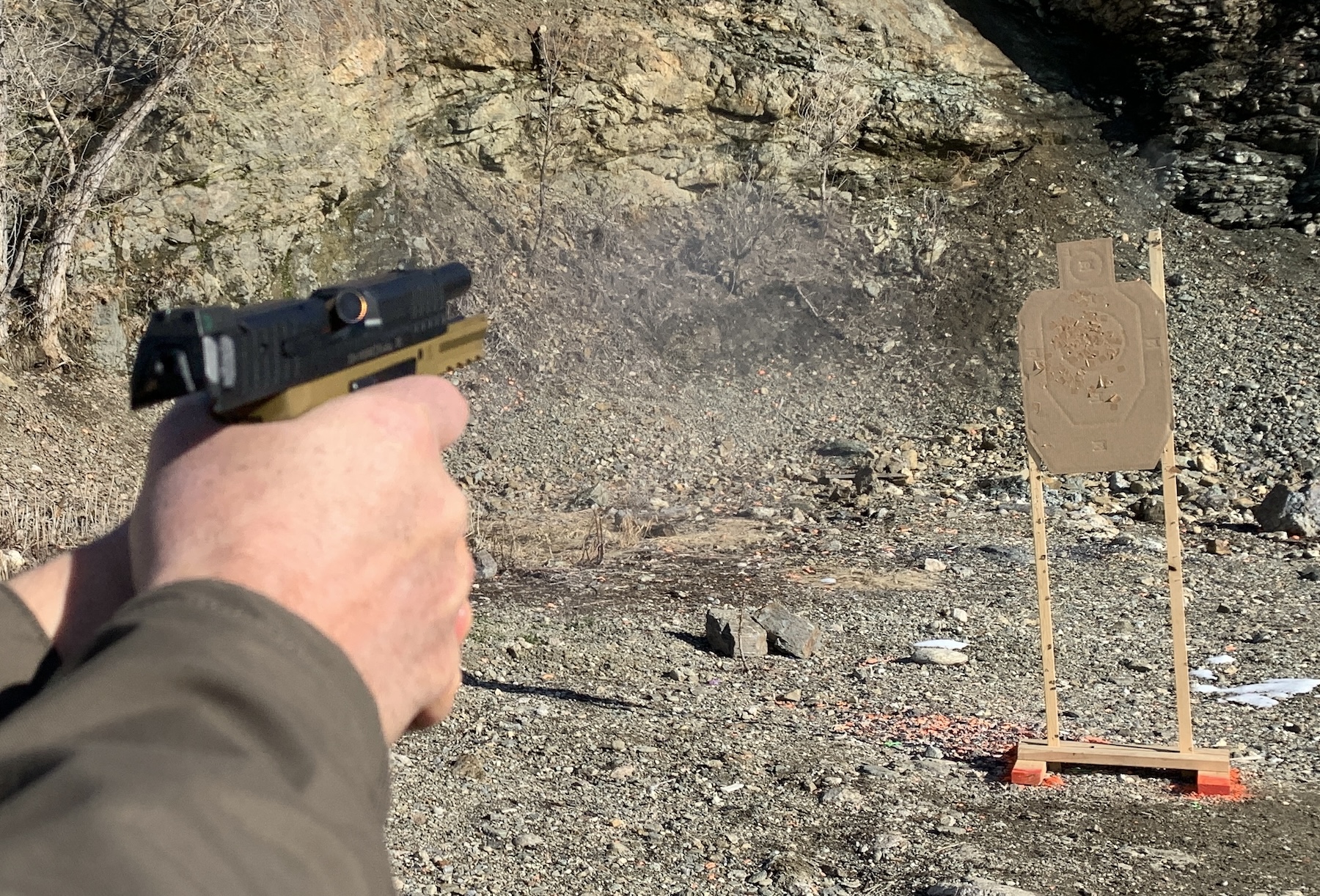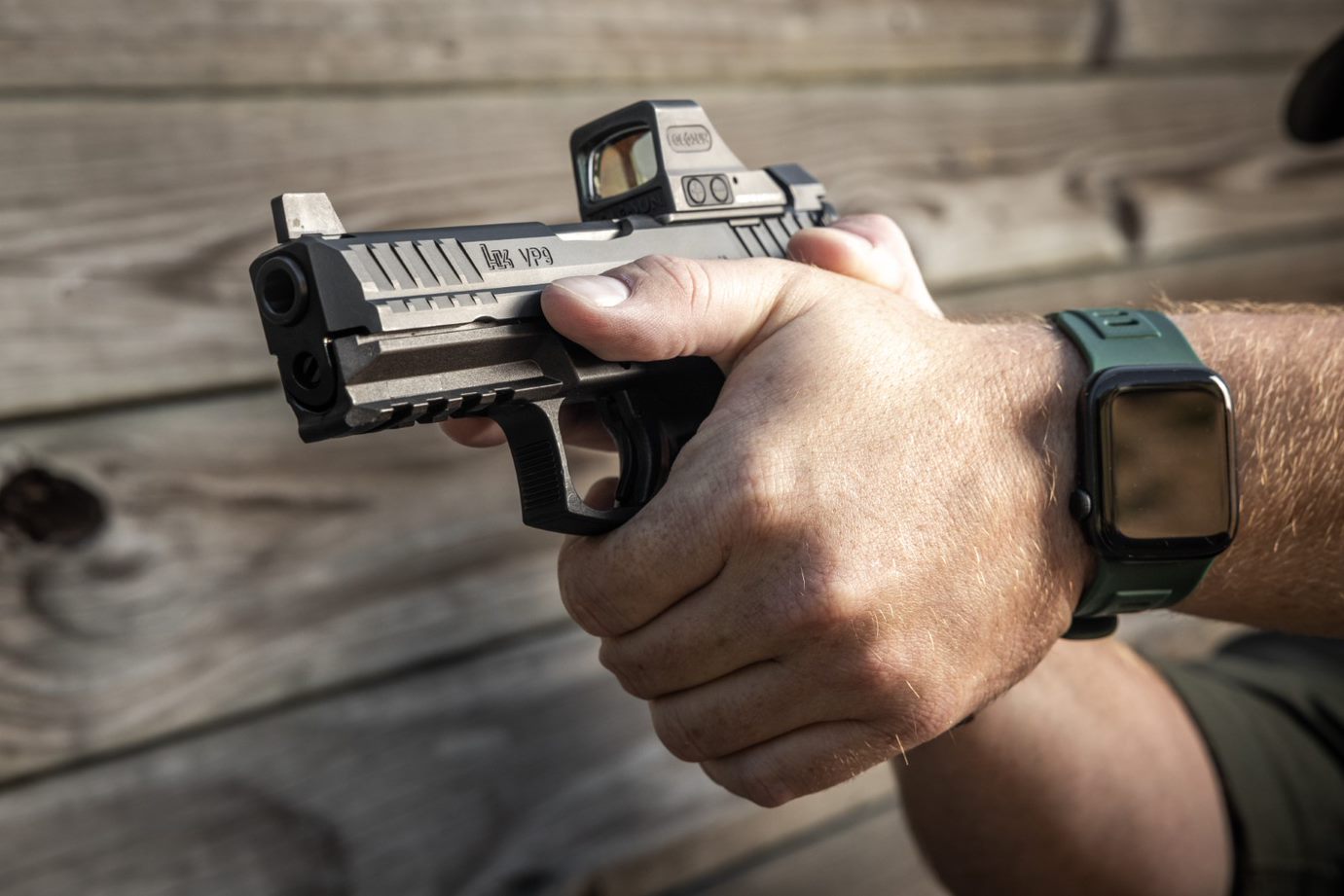
NIJ VP9 Press Release
(Photo courtesy of H&K)
The past week, Heckler & Koch’s law enforcement division announced that their VP-9 pistol had been certified under the National Institute for Justice’s (NIJ) 0112.03 standard. Good for H&K, but what does that mean, you ask? Excellent question.
Like the updated body armor standard I recently wrote about, there are NIJ standards for firearms and other critical equipment. This includes current or draft standards for shotguns and patrol rifles.
Current Standard
Adopted in July 1999, the current handgun standard is 0112.03. The document’s purpose is to establish performance requirements and test methods for law enforcement duty pistols.
Those requirements start out with the necessary criteria for acceptance. Before getting to the pistol itself, the manufacturer needs to send the following information with the handgun – instructions for assembly and disassembly as well as a parts diagram, cleaning instructions, directions on safety features and how to use them, identification of acceptable ammunition, how spare parts can be obtained, and any certification information.

A handgun isn’t viable for duty use unless it has holster support – Raven Concealment and Safariland supported the VP9.
The document lays out both a visual and physical inspection of the samples submitted for testing and certification. How does that apply to your agency when they are selecting a duty weapon?
Selection
Your selection process can take into consideration the minimum requirements laid out in this NIJ standard. For example, visually, there cannot be any loose chips or debris from the machining process inside the frame or slide. Physically, the pistol’s action must operate smoothly along with its ejection cycle, trigger, hammer or striker, magazines, and all safeties. If they do not work smoothly and as designed, those are disqualifying issues. That is not an individual officer’s opinion; that is the NIJ standard.
Each pistol is function-tested in all its designed action modes. The process looks for any sticking, binding, grittiness, or hesitation. Extraction and ejection are tested in live fire.
The trigger pull is tested in terms of the design – whether single action, double, or striker fired. All safety features were similarly tested – trigger safety, grip safety, or frame-mounted safeties. The insertion and removal of the magazines were examined, as well as whether they would bind and stick.
Two types of round counts are addressed in the document. Initially, there is a 600-round live-fire test that must be completed without any mechanical or structural failures. There cannot be any more than five (5) stoppages or malfunctions, if you will, within those 600 rounds.
In the 0112.03 standard, the identified calibers are 9mm Luger, .357Sig, .40S&W, and .45ACP.
Pending Standard
That is off the old standard; what about the pending standard? 0112.04 has been out in draft form since December 2018.
In addition to the previous criteria, the pending standard will address:
– Endurance testing;
– Point of aim, point of impact testing;
– Drop testing;
– High and low-temperature extremes;
– Sand and saltwater exposure;
– Obstructed bore issues;
Endurance Testing
There is a ten thousand (10,000) round endurance test requirement. An individual agency may not be able to run enough pistols to that round count, but if a handgun model has passed that sort of testing, it is an indication of the gun’s capabilities.
The current Department of Defense Modular Handgun System pistol was tested to 10,000 rounds. My recollection of the FBI’s testing – from conversations with special agents at their Ballistics Research Facility – was they fired 20,000 rounds through test samples. Based on the Bureau’s test information, during the last handgun selection process I was involved in, we fired 2500 rounds through each of five sample pistols, with two types of weapon-mounted lights attached. While we were not going to duplicate the Bureau’s testing, we could validate performance data.
Accuracy
A Ransom Rest must be used for accuracy testing that will take place at 25 yards. It will involve five groups of five shots each. Those groups must be less than 2” in diameter. There can be no more than an extreme spread of 4” from shot to shot at that distance during the process.
Pistols and their magazines will be drop-tested from a height of five (5) feet onto concrete. The handgun was dropped at ten different angles.
If the pistol has ambidextrous or reversible controls, it will be tested with two right-hand samples and one left-handed.
Testing will address temperature extremes of -20 degrees and 120 degrees Fahrenheit.
Issues
Two areas of note are missing from the draft 0112.04 standard. The first is the subject of accessory rails on the frame. It would be nice to have one design for weapon-mounted lights and lasers. That would simplify the design and manufacturing process.

Pistol-mounted optics and weapon-mounted lights are very common these days; neither are discussed in the pending standard (courtesy of H&K)
The second area is pistol-mounted optics. In December 2018, the transition to optics was starting to simmer. The 0112.04 standard lacks any mention of the topic. Standardized mounting methods, footprints, covers, placement of back-up iron sights, and the like all need to be addressed.
The pending standard adds .380Auto to the caliber list.
Final Thoughts
I applaud H&K’s efforts to have the VP9 and VP9SK certified under 0112.03, and I’m very glad they announced their success. In addition to the VP9, other currently certified pistols include:
Beretta M9A1, Gen 5 Glock 17 and 19, Shadow Systems DR920 and MR920, along with Smith & Wesson’s M&P 2.0 in 9mm (3.6”, 4”, 4.25”, and 5”), .40S&W (4.25”), and .45ACP (4”, 4.25”) models. Some manufacturers are notable in their absence. The current handgun standard is nearly 25 years old; the pending standard has been sitting for five years. Neither address the subject of pistol-mounted optics.

The criteria has been out for over 20 years, these are the handguns that have been certified (NIJ website).
The yet-to-be-adopted patrol rifle standard is dated December 2018. The 12-gauge shotgun standard (0113.00) was published in March 1989 – months before I started the police academy.
NIJ needs to update these documents, make each one current, and adopt them. Individual officers, law enforcement agencies, and the firearms industry deserve that.
RESOURCES


















